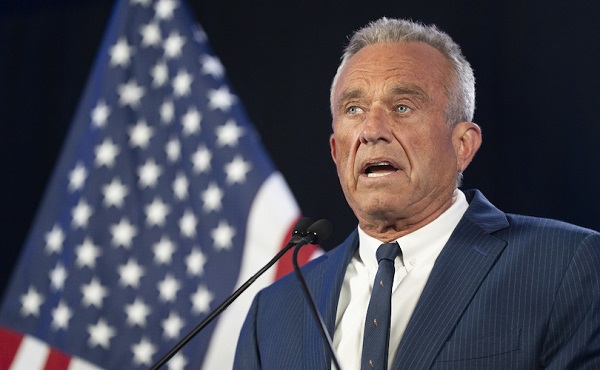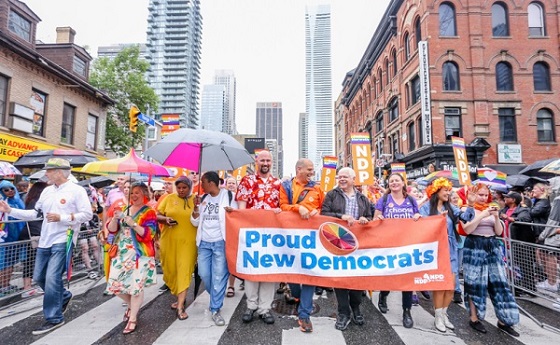Automotive
Carmakers’ shocking EV message to Carney
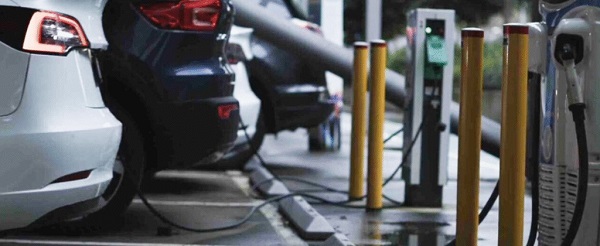
By Dan McTeague
Earlier this month it was reported that Brian Kingston, the Canadian Vehicle Manufacturers’ Association CEO, had met with the prime minister along with the CEOs of Ford Canada, Stellantis Canada, and GM Canada. His message, and that of the companies he represents, was clear: the Liberal government’s electric vehicle mandate is totally unachievable.
“If we are going to hit the 2026 mandated target of 20 per cent EV sales, you would have to grow Zero-Emission-Vehicle (ZEV) sales by 180,000 units,” Kingston said.
To put that number in perspective, MacLean’s reported earlier this year that despite the roughly $52 billion that our federal and provincial governments (especially the Ford government in Ontario) have poured into the electric vehicle industry, “to date, only 40,000 EVs have been built in Canada.”
So, by the industry’s own calculations, we would need to quadruple our total EV output in the next six months.
That’s just not happening — especially since Canadian automakers have been scaling back their planned EV production.
In May, Honda announced that it would be pushing back its planned electric vehicle and battery production at its facility in Alliston, ON by two years. That should sound ominous to anyone who remembers that Ford Motor Company had similar plans to delay EV production in its plant in Oakville by two years, only to later announce that they were scrapping their EV production plans entirely.
General Motors too, has delayed EV production at their plant in St. Catharines and scaled back production at their plant in Ingersoll. All of these blows to the industry underline how unworkable the Liberals’ EV mandate is.
Said Kingston, “There is simply no way that that can occur on such a short timeline, given all of the current market forces at play.”
Now, as I’ve discussed in the past, those “market forces” include uncertainty around tariffs and U.S. trade, which is true across the economy. But it is a particular challenge for Canada’s EV industry, whose whole business model was built on the assumption of unique and unrestricted access to the American market. Without that, and without Americans being similarly forced to purchase EVs (as they would have had Joe Biden or Kamala Harris won the last election,) the whole scheme falls apart.
There are simply not enough Canadians to support the kind of investment in electric vehicles the Trudeau-and-Carney Liberals had in mind when the mandate was passed.
Moreover — and here’s another one of those “market forces” Kingston referred to — even Canadian car buyers have cooled on EVs. According to Stats Canada, EVs made up only 7.5 per cent of new vehicles purchased in Canada as of this past April, a 28.5 per cent decline from April, 2024. And total EV sales in Canada last year fell to just 13.7 per cent, a number which Tristin Hopper pointed out is itself somewhat misleading: “Of the 81,205 zero-emission vehicles sold in Canada in the last quarter of 2024, 49,357 were sold in Quebec.”
Which is to say, 60 per cent of that already-deflated number can be sourced to a single province. That doesn’t bode well for the future of the EV industry in Canada.
How Carney handles the EV mandate will say a lot about how he plans to govern the country. Is he going to be the businessman PM his X/Twitter shills are constantly saying he is? Or will he govern as the environmentalist activist that he has been for his entire career?
It isn’t like he can sweep this one under the rug, like he did with the Consumer Carbon Tax. While he might be able to keep up this Carbon Tax shell game with Canadian consumers for a while yet, people have a tendency to notice when they’re being forced to buy cars that they don’t want.
That’s especially true when the electric vehicles his government is mandating we purchase are significantly more expensive and inconvenient than the gas-and-diesel driven cars and trucks we do want, the ones we grew up driving, which we learned how to fix from our fathers or our uncles, and which our cousins in the States can buy for a fraction of the cost we will be paying.
For these reasons and more, Carney should scrap the EV mandate.
He can’t ignore this matter for much longer. It isn’t going away on its own.
Dan McTeague is President of Canadians for Affordable Energy.
Automotive
Canadians rejecting Liberal’s EV mandates because consumers are rational
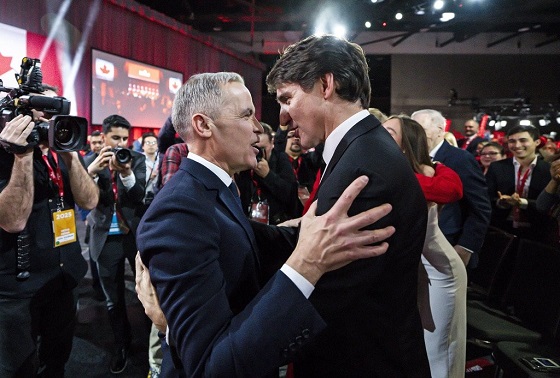
From Resource Works
Bad policy, not misinformation, is to blame for the decline in EV sales
It was a clever move for federal minister Gregor Robertson to stand in Victoria and blame the oil and auto industries for spreading “misinformation” about electric vehicles.
If people don’t follow a government order, then someone else must have lied to them.
But the truth is simpler, and more uncomfortable for Ottawa and Victoria: Canadians are against aggressive EV mandates because the policies behind them are not based on reality.
Politicians have been pushing electric vehicles (EVs) as a cornerstone of the fight against climate change for years, promising a cleaner future through ambitious mandates and generous rebates.
All of this effort looked good on paper: passing laws, handing out thousands (millions, billions) in subsidies, paving the way for Canada’s transition to an electric future.
But, in real life, it’s just not working out this way.
Why? Because instead of crafting long-term rules based on the realities of infrastructure, cost, and consumer choice, Ottawa rushed ahead with policies that ignored market signals.
They assumed subsidies would keep EV sales flowing indefinitely, only to be shocked when sales plummeted once the rebates dried up.
Canadians are responding rationally to high prices, unreliable charging networks, and impractical mandates.
Not long ago, Ottawa set ambitious, unattainable targets: 20 percent zero-emission vehicle sales by 2026, 60 percent by 2030, and 100 percent by 2035.
British Columbia went further, aiming for 26 percent by 2026, 90 percent by 2030, and 100 percent by 2035.
In theory, it looked achievable. In practice, it’s been a wake-up call.
The numbers tell the story. Statistics Canada reported that EVs accounted for 18.29 percent of new vehicle sales in December 2024. Just four months later, when Ottawa’s iZEV program ran out of funds and provincial rebates ended, that figure crashed to 7.53 percent.
In British Columbia, once a leader in EV adoption, the market share dropped from nearly 25 percent in mid-2024 to 15 percent a year later.
Quebec, long the most EV-friendly province, saw a similar decline when its $7,000 subsidy was slashed nearly in half.
Why? Canadians have been very clear.
Cost is the biggest barrier, according to polls like this one from Ipsos in 2025. But this isn’t the only issue.
Ipsos found 56 percent of British Columbians oppose EV mandates, with even higher resistance among older households and those outside Metro Vancouver. People resent being told they must buy expensive cars they can’t easily charge or fully trust in harsh winters.
Subsidies made high sticker prices tolerable for middle-class families, but when the rebates vanished while mandates and fines remained, buyers walked away.
Barry Penner of the Energy Futures Institute put it bluntly: governments “put the cart before the horse,” demanding widespread adoption before ensuring affordability or infrastructure.
The financial penalties for automakers are steep. Missing federal targets by 10 percent could mean hundreds of millions in fines.
In British Columbia, dealers face $20,000 penalties for every gas-powered car sold over the mandated ratio. Those who can’t comply often buy credits—frequently from Tesla, a California-based company that benefits while Canadian businesses foot the bill. These rules aren’t just hitting “Big Oil”; they’re straining local dealers and sending money abroad.
Infrastructure is another glaring issue. Ottawa estimates Canada has 33,700 chargers today but needs 679,000 by 2040—an average of 40,000 new chargers annually for 15 years, a pace experts call unrealistic.
In British Columbia, Penner notes the province has just 5,000 chargers now and needs 40,000 more by 2030. Meeting the 2035 mandate would also require electricity equivalent to two additional Site C dams, even as B.C. relies on 20 to 25 percent of its power from external sources, often fossil fuels.
Canadians aren’t against cleaner technology—they’re against being forced into choices that don’t fit their lives. The frustration stems from policies that feel disconnected from the realities of cost, convenience, and infrastructure. More blame or moralizing won’t fix this.
Penner has urged governments to “take our foot off the gas and realign our policies with reality.”
That could mean reinstating rebates if mandates persist, investing heavily in charging networks, or setting broader emissions targets that give consumers real choices instead of rigid quotas.
The EV dream will keep stalling unless that happens. It’s not because Canadians don’t know what’s going on; it’s because governments made decisions based on wishful thinking.
Agriculture
Canola or cars? Canada can’t save both
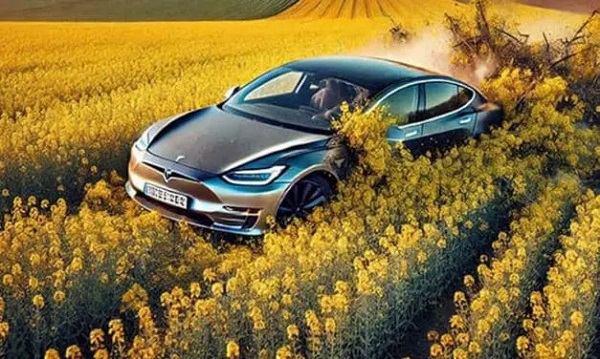
This article supplied by Troy Media.
 By Doug Firby
By Doug Firby
Canada is risking its most successful export to prop up an EV pipe dream
Picture a Canadian industry that contributes $43 billion to the economy and employs about 200,000 people.
There aren’t many of those in this country. Any industry of that size should be considered indispensable.
And yet, while there is (understandable) national hand-wringing over the future of Canada’s auto industry—especially in light of U.S. President Donald
Trump’s renewed tariff rampage—another industry, arguably more economically important, is being dangerously overlooked.
That industry is canola.
A summer drive through Manitoba, Saskatchewan or Alberta makes the scale hard to miss. Yellow fields stretch to every horizon. Canola production has exploded over the past decade and has become the very lifeblood of the Prairies.
Without it, large parts of those provinces would be economically barren and far more sparsely populated. We’re not talking about niche agriculture here—we’re talking about a foundational industry that keeps the lights on across three provinces.
Canada is the world’s largest exporter of canola, a crop used to produce cooking oil, animal feed and biofuels. Its export-driven success makes it a cornerstone of the Prairie economy.
Now consider this: Canada’s auto manufacturing industry contributes about $19 billion annually to GDP and employs around 125,000 people directly in assembly and parts manufacturing. Include distribution and aftermarket services, and you get a bigger figure, but the core numbers still pale in comparison to canola.
So, here’s the uncomfortable question: If you had to sacrifice one, which would it be?
It’s a Hobson’s choice. Nobody wants to lose either. But Canada has been pushed into a position where something has to give.
The Trudeau government—and before that, the Biden administration—imposed 100 per cent tariffs on made-in-China electric vehicles (EVs). The logic was straightforward: protect the billions being pumped into Canada’s auto sector and turn the country into a hub for EV innovation and production.
It was a defensive move: one meant to slow China’s dominance in the global EV market and give domestic manufacturers room to grow. Without it, cheap, wellbuilt Chinese EVs would undercut Canadian and North American models before they ever left the factory floor.
But China doesn’t take these things lightly. In retaliation, it slapped a 76 per cent tariff on Canadian canola. Prairie farmers, many of whom are already grappling with rising costs and unpredictable weather, are now wondering if their main market is disappearing overnight.
China has long been Canada’s largest canola customer, though the relationship has had flare-ups, including temporary bans in past years tied to diplomatic disputes.
More than two-thirds of Canada’s exported canola goes to China. The latest tariff hike has already wiped out an estimated $1 billion in value. And there’s no clear end in sight.
Manitoba Premier Wab Kinew was blunt last week: Canada cannot afford to be in a trade war with both the United States and China. He suggested that, in the short term, Ottawa should direct EV tariff revenues to support canola producers. That may buy us some time. But the broader strategic question looms larger: With the U.S. under Trump becoming an increasingly unstable trade partner, and China punishing us for playing by American rules, where does Canada place its long-term bet?
It’s not an easy question to answer.
China is hardly an ideal partner. Its human rights record is abysmal, and its growing economic power often comes with strings attached. But we also can’t deny that it has already become the global manufacturing centre in many key sectors—including electric vehicles.
Then there’s the U.S. A longtime ally, yes, but under Trump, all bets are off. In January, he said of Canada, “We don’t need anything they have.” Not cars. Not oil. Not even niceties.
CUSMA—the Canada–United States–Mexico Agreement that replaced NAFTA—governs most of Canada’s trade with our two largest partners. If Trump reopens the deal—and with Trump, it’s usually safest to take him literally—the Canadian auto industry may not survive. Billions in subsidies and protective tariffs won’t matter if the largest market slams its door shut.
So, again: what should we protect?
New markets for canola are being pursued—in Europe, Japan and elsewhere. But they won’t match China’s scale anytime soon. Diversifying export markets takes years. Prairie farmers don’t have that kind of time.
Meanwhile, dreams of building a Canadian-made EV remain just that: dreams. The auto sector may eventually pivot and survive, but right now, it’s the one on life support. Canola is the industry that’s vibrant—unless we let it get crushed in a trade crossfire.
I lived in an auto town for over two decades. I know the stakes. I’ve seen what happens when plants close, when supply chains dry up, and when livelihoods vanish.
But we need to be realistic.
Canola is a winning industry. It feeds the economy, supports thousands of families and helps keep our rural communities alive. It doesn’t need endless
subsidies or federal cheerleading—it just needs stable access to markets.
That might mean giving ground on EV tariffs. That might mean swallowing some pride on the international stage. But Canada cannot afford to sacrifice a thriving sector to save one already on the brink.
If we’re going to make hard choices—and we will—let’s make the one that protects what still works.
Canada cannot lose canola.
Doug Firby is an award-winning editorial writer with over four decades of experience working for newspapers, magazines and online publications in Ontario and western Canada. Previously, he served as Editorial Page Editor at the Calgary Herald.
Troy Media empowers Canadian community news outlets by providing independent, insightful analysis and commentary. Our mission is to support local media in helping Canadians stay informed and engaged by delivering reliable content that strengthens community connections and deepens understanding across the country
-

 Alberta1 day ago
Alberta1 day agoAlberta deserves a police force that actually reflects its values
-

 Crime22 hours ago
Crime22 hours agoFormer NYPD Inspector Breaks Down How Charlie Kirk’s Shooter Will Be Caught
-

 Alberta1 day ago
Alberta1 day agoOPEC+ chooses market share over stability, and Canada will pay
-

 Alberta1 day ago
Alberta1 day agoProvincial pension plan could boost retirement savings for Albertans
-
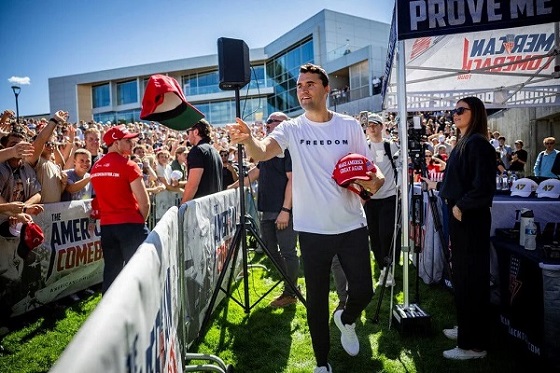
 Bruce Dowbiggin1 day ago
Bruce Dowbiggin1 day agoKirk’s Killing: Which Side Can Count on the Military’s Loyalty Now?
-

 Crime1 day ago
Crime1 day agoFBI offering $100,000 reward for information leading to arrest of Charlie Kirk Assassin
-

 International2 days ago
International2 days agoA social media crackdown sparked the revolution but government corruption set Nepal’s youth on fire
-

 Censorship Industrial Complex1 day ago
Censorship Industrial Complex1 day agoUK’s top cop wants to ‘stop policing tweets’: report


